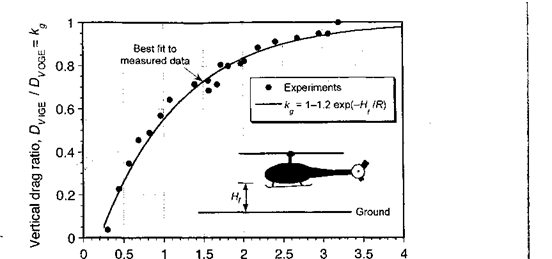Fuselage Side-Force
During hovering flight, the tail rotor provides the anti-torque thrust to maintain yaw equilibrium. However, in sideward flight or when hovering over a fixed point above the ground in a cross wind, an aerodynamic side-force will also be produced on the fuselage. For most helicopters this side-force is small enough to have a minimal impact on the handling qualities and operational envelope. For a rotor turning in the conventional direction (counterclockwise when viewed from above), the aerodynamic side-force on the fuselage and tail boom will be opposite to the direction of the tail rotor thrust when the helicopter is in starboard sideward flight or has a starboard crosswind component. On some helicopters this effect can affect directional (yaw) control and in some cases may even limit the operational flight envelope – see Amer & Gessow (1955) for the first study. In particular, this can be an issue on military helicopters, which must often demonstrate high-speed sideward flight capability for combat tactics, or for naval helicopters in particular, which must often operate in confined locations in gusty crosswind conditions.
 |
The aerodynamic side-force on the fuselage is found to be accentuated by certain tail boom shapes, which can produce a sizable circulatory lift force in the direction opposite to the anti-torque requirement when the sideward velocity is combined with the main rotor downwash. To counter this undesirable effect, Brocklehurst (1985) and Wilson et al. (1988)
have suggested the use of a strake that runs longitudinally along the one side (usually the port side) of the tail boom – see Section 11.2.4 for a detailed discussion. This strake forces the flow to separate, spoiling the aerodynamic side-force on the tail boom, thereby restoring or improving the normal operational flight envelope of the helicopter. See also Kelly et al.
(1993) .











